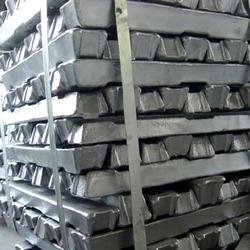The Non-Ferrous Foundry Industry
 Non-ferrous metals are metals that do not contain appreciable amounts of iron in their composition. Commonly used non-ferrous metals include aluminum, copper, lead, nickel, tin, titanium, zinc and alloys of these materials, such as brass (copper/zinc alloys) and bronze (copper/tin alloys). Other non-ferrous metals include the precious metals, such as gold, silver and platinum, and other rare earths such as cobalt, beryllium, bismuth and many more. Often times these non-ferrous metals are combined in specific ratios to create alloys with specific chemical and mechanical properties. These alloys are typically manufactured in a secondary smelting operation, producing ingots of the selected alloy that are then provided to manufacturers to be used in a wide variety of commercial and industrial applications.
Non-ferrous metals are metals that do not contain appreciable amounts of iron in their composition. Commonly used non-ferrous metals include aluminum, copper, lead, nickel, tin, titanium, zinc and alloys of these materials, such as brass (copper/zinc alloys) and bronze (copper/tin alloys). Other non-ferrous metals include the precious metals, such as gold, silver and platinum, and other rare earths such as cobalt, beryllium, bismuth and many more. Often times these non-ferrous metals are combined in specific ratios to create alloys with specific chemical and mechanical properties. These alloys are typically manufactured in a secondary smelting operation, producing ingots of the selected alloy that are then provided to manufacturers to be used in a wide variety of commercial and industrial applications.
 Non-ferrous foundries melt and pour molten non-ferrous metals into molds with a specific desired geometry. The liquid metal is allowed to cool, and is then removed from the mold. The result is a non-ferrous metal casting. The metal castings manufactured by non-ferrous foundries are an important part of the U.S. economy and are widely used in most economic segments. Non-ferrous castings are particularly important in the automotive, energy/power generation, medical technologies, military/defense, plumbing and fluid handling, industrial, marine, tooling & machinery, housing, construction, and aerospace industries.
Non-ferrous foundries melt and pour molten non-ferrous metals into molds with a specific desired geometry. The liquid metal is allowed to cool, and is then removed from the mold. The result is a non-ferrous metal casting. The metal castings manufactured by non-ferrous foundries are an important part of the U.S. economy and are widely used in most economic segments. Non-ferrous castings are particularly important in the automotive, energy/power generation, medical technologies, military/defense, plumbing and fluid handling, industrial, marine, tooling & machinery, housing, construction, and aerospace industries.
Foundry molds can be made many different materials, including silica sand, synthetic molding media, ceramics, plaster, and even other metals such as steel. The type of molding process is typically used to identify different types of foundries. For example, when a foundry utilizes silica sand they are referred to as a sand foundry. A foundry that uses ceramic shell molds formed around wax patterns that are sacrificed to leave a hollow shell are referred to as investment foundries. Examples of foundries that use metal molds include die casters, permanent mold foundries, and semi-permanent mold foundries.
The U.S. foundry industry consists of roughly 1,800 operating foundries, with approximately half of those being non-ferrous foundries or die casters. Most non-ferrous foundries are concentrated in the traditional manufacturing regions, primarily the Great Lakes states, along the Eastern Seaboard, and on the West Coast.
